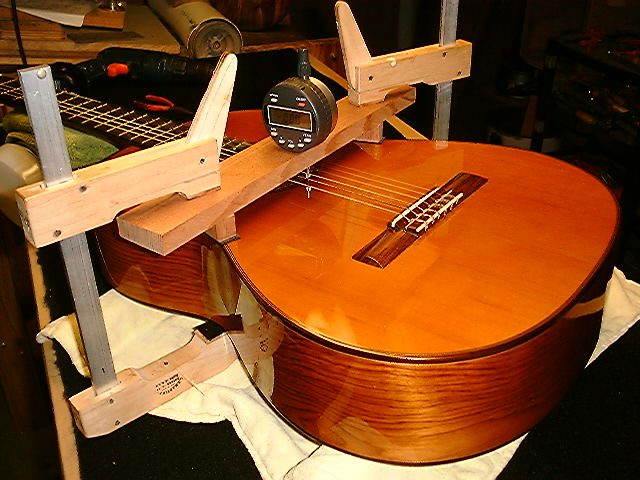If you have a dial indicator at your disposal, you're not very far from being able to make such a measurement. And as a bonus, no calculations - not even long division!

Here I show a jig which will do the trick. The top horizontal board is a couple of inches wider than the width of the lower bout and has a hole drilled along one edge that will snugly fit the base shaft of a dial indicator. Two additional pieces of wood below each end of the board with leather padding on the underside support the board above the soundboard. For maximum deflection, the dial indicator is positioned midway between the brace immediately below the soundhole and the bridge for one measurement and analogously between the bridge and the tailblock for the second measurement.
The difference between the amount of top deflection with the strings tensioned up and strings slacked is what's to be measured in each case.
The actual amount of deflection is a function of many parameters, but if a builder makes essentially the same or similar instruments with nominally the same string tensions, then "successful" instruments will in all likelihood have similar deflections. At least all of mine have...
It would be interesting to see what the deflections of various builders' instruments are. Any volunteers?
aloha,
Dave Hurd
http://www.ukuleles.com